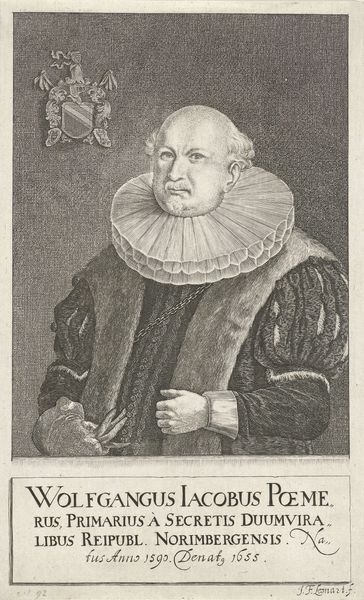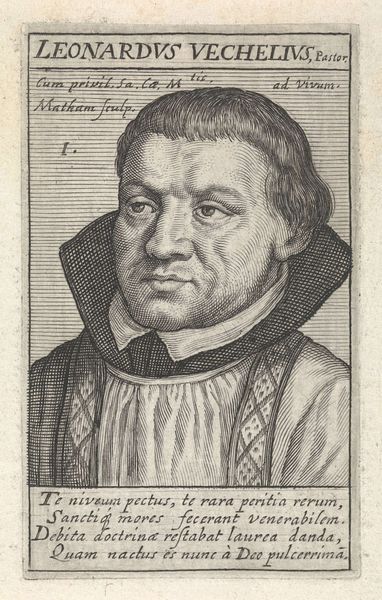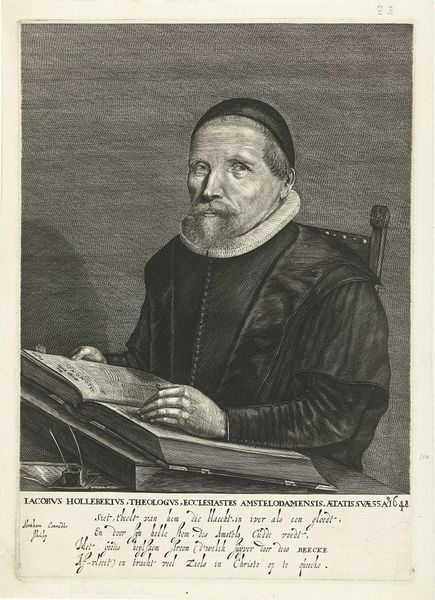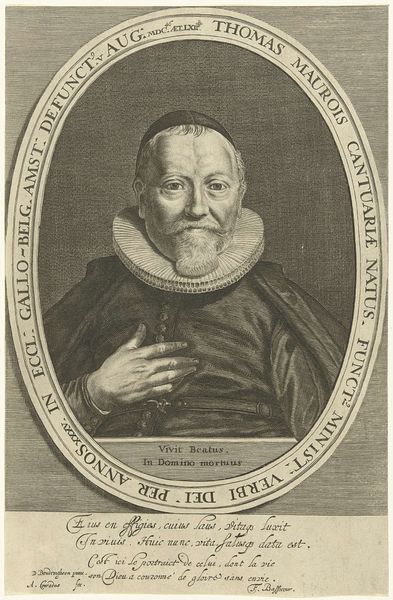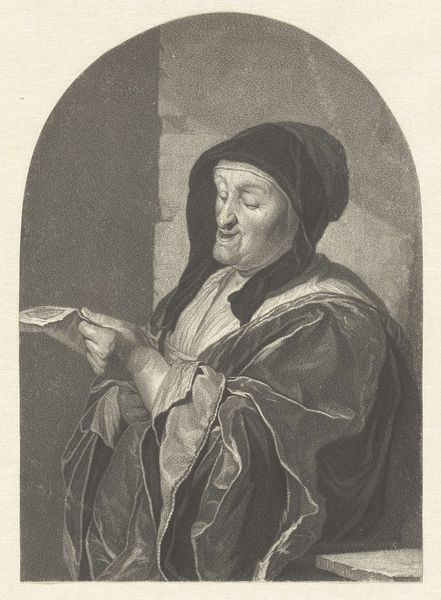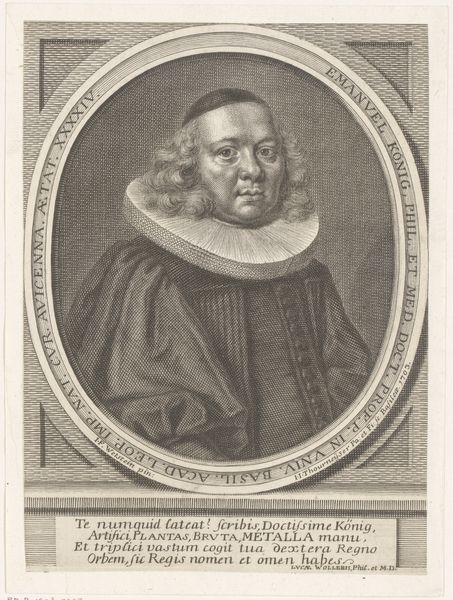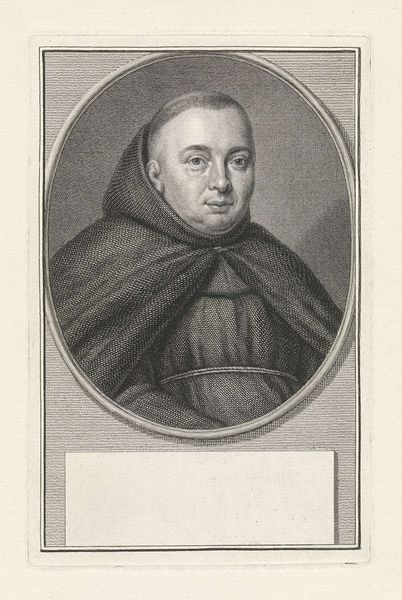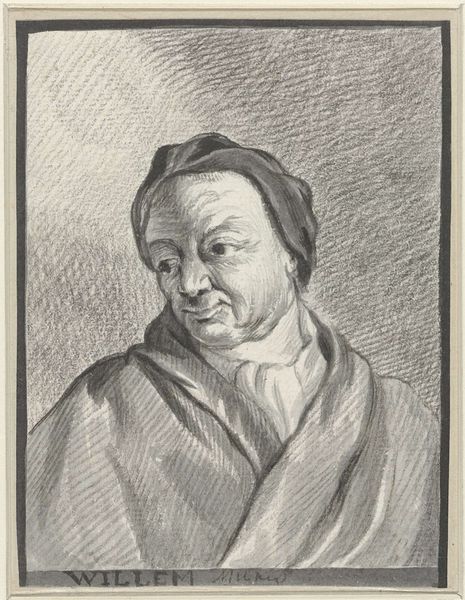
print, engraving
#
portrait
#
baroque
# print
#
pencil drawing
#
line
#
portrait drawing
#
engraving
Dimensions: height 162 mm, width 112 mm
Copyright: Rijks Museum: Open Domain
Editor: Here we have Wenceslaus Hollar's "Portrait of Richard Bernard" from 1641, an engraving. It has a rather stern and imposing feel. What is your read on it? Curator: This engraving offers us a fascinating glimpse into the visual culture surrounding religious figures during a period of significant social and political upheaval. Hollar's rendering captures not just a likeness but also conveys Bernard's status and perhaps even something of the ideological landscape he inhabited. Look at the precision of the lines, the weight given to the clothing versus the face. What do you make of this contrast? Editor: Well, the clothing definitely speaks to his profession, it's rather austere. His face has a weight to it, suggesting life experience and a serious disposition. Curator: Exactly! Now, consider the social context of 17th-century England. Puritanism was on the rise, challenging established religious norms. A figure like Richard Bernard, identified here as a "vigilant" pastor, occupied a complex position. How do you think the artist, Hollar, uses visual cues to either reinforce or subtly critique the power structures of the time? The book, for example, could be a signifier of his leaning and the cultural power struggles centered around scriptural interpretation. Editor: I see what you mean. The book gives him authority, but the somewhat severe depiction could also hint at the stricter side of Puritanism? It's a complicated portrayal, definitely not one-dimensional. Curator: Precisely. These visual strategies, like those found in portraiture of powerful men across classes, are deeply embedded in historical narratives of identity and influence. These small details in artistic portrayals, intentionally or unintentionally, open us up to broader discussions about historical contexts. What new insights did you gain from analyzing the image and its history? Editor: Looking closely makes it more than just a historical image, it turns into a record of ideological battles and shifts of power! Thank you.
Comments
No comments
Be the first to comment and join the conversation on the ultimate creative platform.

